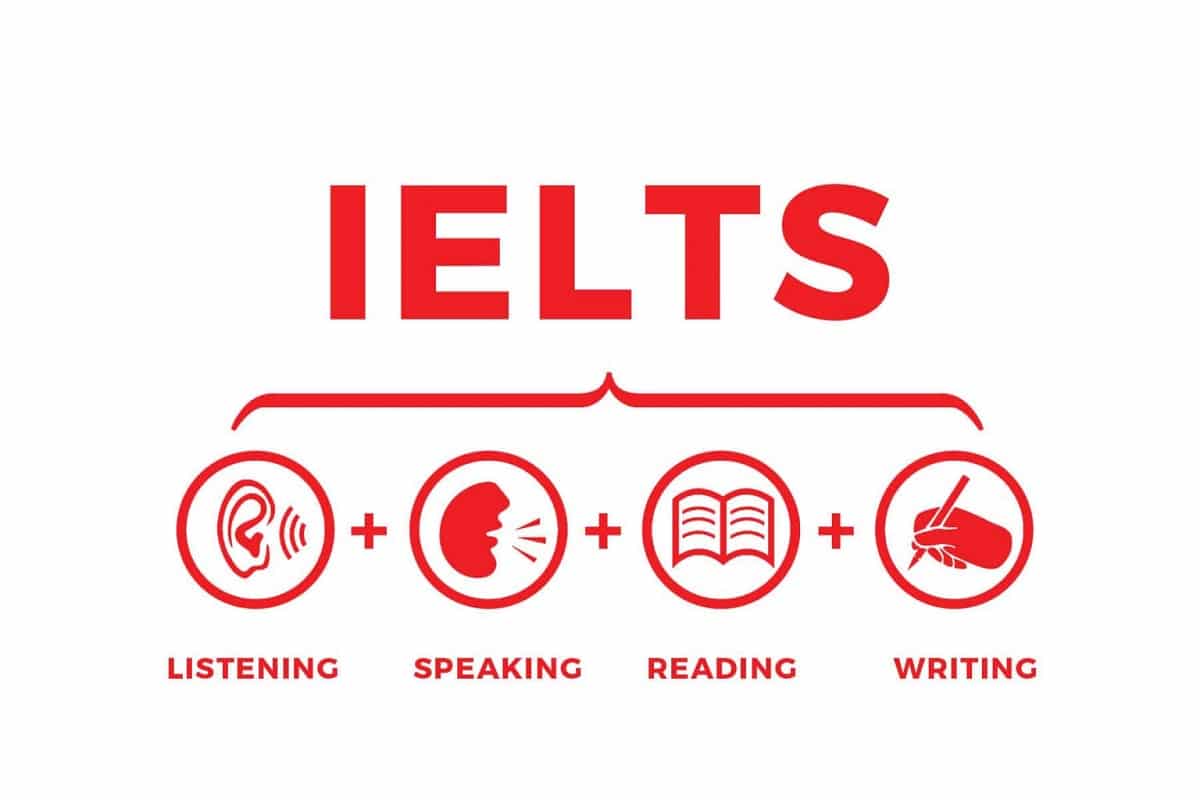Ielts Overview
IELTS stands for “International English Language Testing System”. It is a test to judge a person’s English language ability by checking four different module skills.

What is the Test Format?
IELTS consists of four components. All candidates take the same Listening and Speaking tests. There is a choice of Reading and Writing tests according to whether a candidate is taking the Academic or General Training module.
Academic
For candidates wishing to study at undergraduate or postgraduate levels, and for those seeking professional registration.
General Training
For candidates wishing to migrate to an English speaking country (Australia, Canada, New Zealand, UK), and for those wishing to train or study at below degree level.
Ielts Modules
LISTENING
This is in four sections, each with 10 questions. The first two sections are concerned with social needs. There is a conversation between two speakers and then a monologue. The final two sections are concerned with situations related to educational or training contexts. There is a conversation between up to four people and then a monologue. A variety of question types is used, including: multiple choice, short-answer questions, sentence completion, notes/chart/table completion, labelling a diagram, classification, matching. Candidates hear the recording once only and answer the questions as they listen. Ten minutes are allowed at the end to transfer answers to the answer sheet.
ACADEMIC READING
There are three reading passages, of increasing difficulty, on topics of general interest and candidates have to answer 40 questions. The passages are taken from magazines, journals, books and newspapers. At least one text contains detailed logical argument. A variety of question types is used, including: multiple choice, short-answer questions, sentence completion, notes/chart/table completion, labelling a diagram, classification, matching lists/phrases, choosing suitable paragraph headings from a list, identification of writer’s views/attitudes - yes, no, not given, or true, false, not given.
GENERAL TRAINING READING
Candidates have to answer 40 questions. There are three sections of increasing difficulty, containing texts taken from notices, advertisements, leaflets, newspapers, instruction manuals, books and magazines. The first section contains texts relevant to basic linguistic survival in English, with tasks mainly concerned with providing factual information. The second section focuses on the training context and involves texts of more complex language. The third section involves reading more extended texts, with a more complex structure, but with the emphasis on descriptive and instructive rather than argumentative texts. A variety of question types is used, including: multiple choice, short-answer questions, sentence completion, notes/chart/table completion, labelling a diagram, classification, matching lists/phrases, choosing suitable paragraph headings from a list, identification of writer’s views/attitudes - yes, no, not given, or true, false, not given.
ACADEMIC WRITING
There are two tasks and it is suggested that candidates spend about 20 minutes on Task 1, which requires them to write at least 150 words, and 40 minutes on Task 2-250 words. The assessment of Task 2 carries more weight in marking than Task 1. In Task 1 candidates are asked to look at a diagram or table and to present the information in their own words. They are assessed on their ability to organise, present and possibly compare data, describe the stages of a process, describe an object or event, explain how something works. In Task 2 candidates are presented with a point of view, argument or problem. They are assessed on their ability to present a solution to the problem, present and justify an opinion, compare and contrast evidence and opinions, evaluate and challenge ideas, evidence or arguments. Candidates are also judged on their ability to write in an appropriate style.
GENERAL TRAINING WRITING
There are two tasks and it is suggested that candidates spend about 20 minutes on Task 1, which requires them to write at least 150 words, and 40 minutes on Task 2-250 words. The assessment of Task 2 carries more weight in marking than Task 1. In Task 1 candidates are asked to respond to a given problem with a letter requesting information or explaining a situation. They are assessed on their ability to engage in personal correspondence, elicit and provide general factual information, express needs, wants, likes and dislikes, express opinions, complaints, etc. In Task 2 candidates are presented with a point of view, argument or problem. They are assessed on their ability to provide general factual information, outline a problem and present a solution, present and justify an opinion, evaluate and challenge ideas, evidence or arguments. Candidates are also judged on their ability to write in an appropriate style.
-
Part 1
The candidate and the examiner introduce themselves. Candidates then answer general questions about themselves, their home/family, their job/studies, their interests and a wide range of similar familiar topic areas. This part lasts between four and five minutes
-
Part 2
The candidate is given a task card with prompts and is asked to talk on a particular topic. The candidate has one minute to prepare and they can make some notes if they wish, before speaking for between one and two minutes. The examiner then asks one or two rounding-off questions. -
-
Part 3
The examiner and the candidate engage in a discussion of more abstract issues which are thematically linked to the topic prompt in Part 2. The discussion lasts between four and five minutes. The Speaking module assesses whether candidates can communicate effectively in English. The assessment takes into account Fluency and Coherence, Lexical Resource, Grammatical